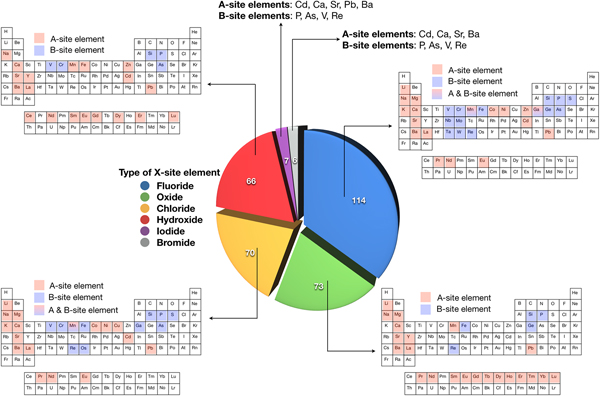Crossref Citations
This article has been cited by the following publications. This list is generated based on data provided by
Crossref.
Scully, John R.
and
Balachandran, Prasanna V.
2019.
Future Frontiers in Corrosion Science and Engineering, Part III: The Next “Leap Ahead” in Corrosion Control May Be Enabled by Data Analytics and Artificial Intelligence.
Corrosion,
Vol. 75,
Issue. 12,
p.
1395.
Bulanov, E. N.
Petrov, S. S.
Xu, Z.
Knyazev, A. V.
and
Skoblikov, N. E.
2021.
Synthesis and Crystal Structure of Some Ba-Apatites.
Russian Journal of Inorganic Chemistry,
Vol. 66,
Issue. 4,
p.
455.
Frankel, Gerald S.
Vienna, John D.
Lian, Jie
Guo, Xiaolei
Gin, Stephane
Kim, Seong H.
Du, Jincheng
Ryan, Joseph V.
Wang, Jianwei
Windl, Wolfgang
Taylor, Christopher D.
and
Scully, John R.
2021.
Recent Advances in Corrosion Science Applicable To Disposal of High-Level Nuclear Waste.
Chemical Reviews,
Vol. 121,
Issue. 20,
p.
12327.
Okafor, Emmanuel
Obada, David O.
Ibrahim, Yusuf
and
Dodoo‐Arhin, David
2021.
Prediction of the reflection intensity of natural hydroxyapatite using generalized linear model and ensemble learning methods.
Engineering Reports,
Vol. 3,
Issue. 2,
Dias, Janaína Lopes
Sott, Michele Kremer
Ferrão, Caroline Cipolatto
Furtado, João Carlos
and
Moraes, Jorge André Ribas
2021.
Data mining and knowledge discovery in databases for urban solid waste management: A scientific literature review.
Waste Management & Research: The Journal for a Sustainable Circular Economy,
Vol. 39,
Issue. 11,
p.
1331.
Fiedler, L.
Shah, K.
Bussmann, M.
and
Cangi, A.
2022.
Deep dive into machine learning density functional theory for materials science and chemistry.
Physical Review Materials,
Vol. 6,
Issue. 4,
Puzio, Bartosz
and
Manecki, Maciej
2022.
The prediction method for standard enthalpies of apatites using the molar volume, lattice energy, and linear correlations from existing experimental data.
Contributions to Mineralogy and Petrology,
Vol. 177,
Issue. 11,
Obada, David O.
Osseni, Semiyou A
Sina, Haziz
Oyedeji, Ayodeji N.
Salami, Kazeem A.
Okafor, Emmanuel
Csaki, Stefan
Abolade, Simeon A.
Akande, Akinlolu
Dauda, Muhammad
Kuburi, Laminu S.
Dalhatou, Sadou
Abifarin, Johnson K
Bada, Abdulaziz A.
and
Dauda, Emmanuel T.
2023.
Hydroxyapatite materials-synthesis routes, mechanical behavior, theoretical insights, and artificial intelligence models: a review.
Journal of the Australian Ceramic Society,
Vol. 59,
Issue. 3,
p.
565.
Liu, Xiu-Min
Ma, Deng-Xue
and
Ju, Xue-Hai
2023.
Solvent-regulated fluorimetric differentiation of Al3+ and Zn2+ using a dual functional sensor based on the photo-induced electron transfer and intramolecular proton transfer mechanism.
MRS Communications,
Vol. 13,
Issue. 4,
p.
634.
Hu, Guang
and
Pfingsten, Wilfried
2023.
Data-driven machine learning for disposal of high-level nuclear waste: A review.
Annals of Nuclear Energy,
Vol. 180,
Issue. ,
p.
109452.
Wang, Jianwei
Ghosh, Dipta B.
and
Zhang, Zelong
2023.
Computational Materials Design for Ceramic Nuclear Waste Forms Using Machine Learning, First-Principles Calculations, and Kinetics Rate Theory.
Materials,
Vol. 16,
Issue. 14,
p.
4985.
Bulanov, E.N.
Golitsyna, O.N.
Ostrovskaya, Yu.V.
Egorikhina, M.N.
Zaslavskaya, M.I.
and
Aleynik, D.Ya
2024.
Synthesis, crystal structure and biological activity of bismuth-sodium-oxoapatite.
Ceramics International,
Vol. 50,
Issue. 7,
p.
11150.
Luan, Lele
Ravi, Sandipp Krishnan
Bhaduri, Anindya
Pandita, Piyush
Wang, Liping
Ramachandra, Nesar
and
Madireddy, Sandeep
2024.
High-dimensional Surrogate Modeling for Image Data with Nonlinear Dimension Reduction.





